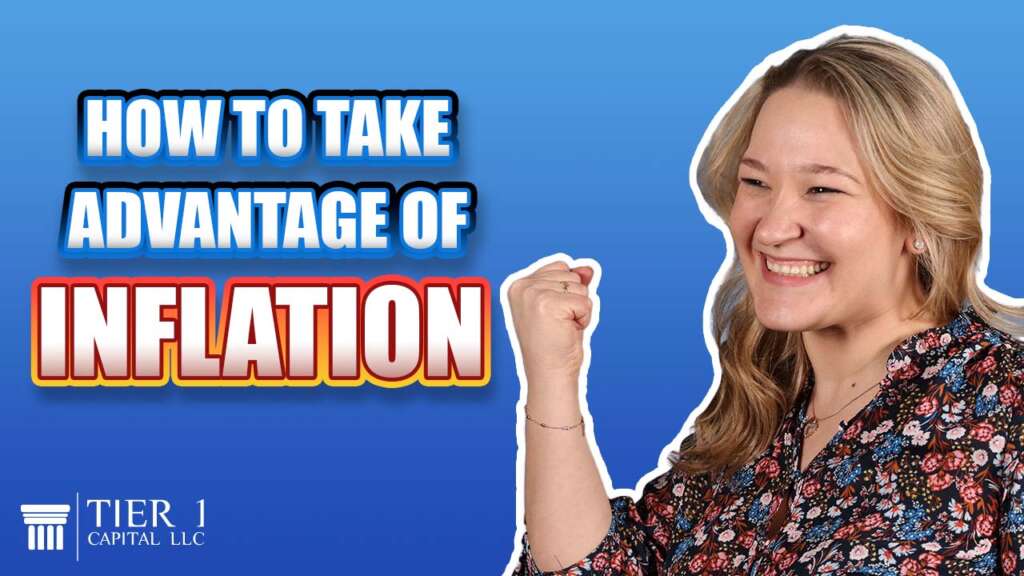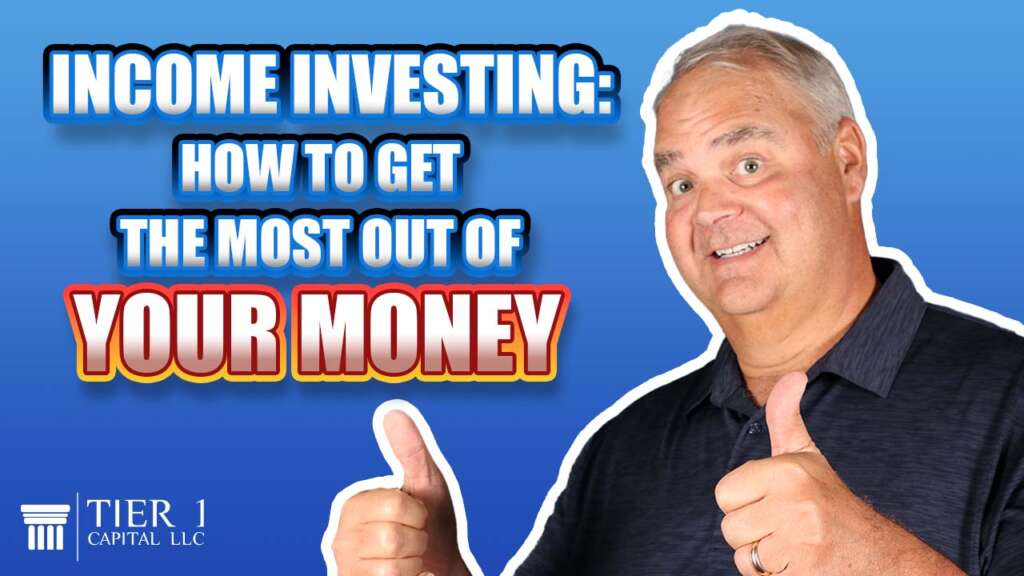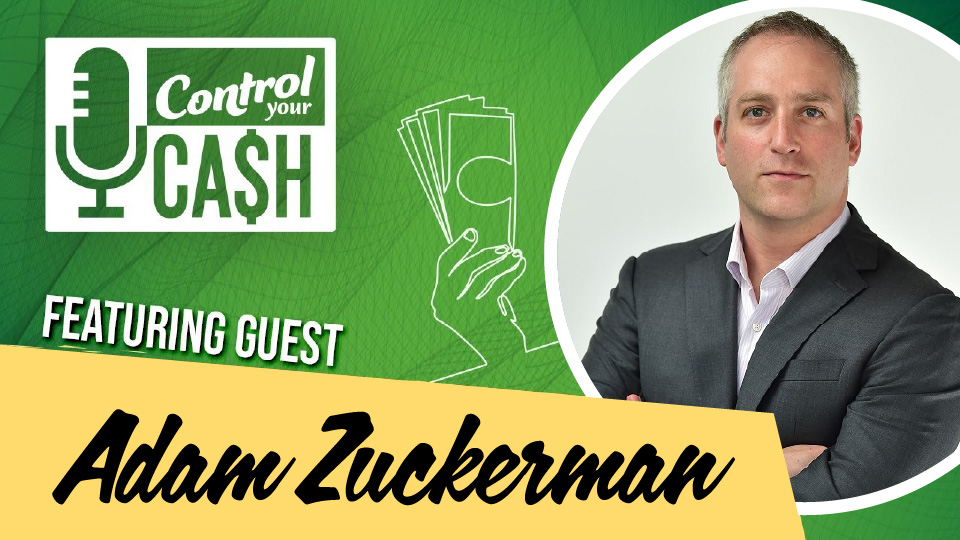In this episode, Adam Zuckerman shares his insights on the importance of estate planning and the tools necessary to make the process easier. He discusses his journey towards creating solutions that help individuals manage their estate and end-of-life tasks efficiently. The conversation delves into the significance of preparing for asset protection, collaborating with financial advisors, and working with estate attorneys and religious organizations to ensure a smooth transition of wealth.
Transcript
Olivia: “Hello and welcome to the Control Your Cash podcast. I’m your host, Olivia Kirk.”
Tim: “And I’m your co-host, Tim Yurick. Today we have with us Adam Zuckerman. Adam, thank you so much for joining us today.”
Adam: “Yeah, it’s great to be here. I think I like ‘otter’ better. That should be a new nickname.”
Olivia: “Hey, you got it, at least for the next hour. All right, let me tell you guys a little bit about Adam. As an entrepreneur, attorney, and MBA, Adam is a subject matter expert focused on the impact and implementation of future-facing technologies and the fourth industrial revolution, often at the intersection of enterprise growth and startups. With a diverse background in many industry verticals, including energy, finance, nonprofits, startups, and Fortune 500 companies, he serves as an advisor to several organizations, keynotes events around the world, and has been hired to present on the future of marketing and technology to leading global agencies. He’s also an Eisenhower fellow, adjunct professor at the University of Maryland, and has been a guest analyst on the topic of business and technology on CNBC nearly two dozen times. So again, thank you so much, Adam, for being with us. We’re excited for a great show.”
Adam: “It is great to be here. That is a bio that I haven’t heard for a very long time, but it’s a blast from the past. Glad to be here, and we’ll talk about what we’re working on today too.”
Tim: “Yeah, awesome. So, Adam, I appeared on your podcast several weeks ago, and it occurred to me that you and I have a lot of synergies in the business that we do. So I was very, very interested in the estate planning concepts that you have experienced and you have sort of perfected in my eyes. So if you could give us a sort of a background on your journey as to how you got to that point and, more importantly, some of the collateral and the products that you have designed and implemented.”
Adam: “Yeah, I’d be happy to. It’s an unexpected journey that’s taken me to where I am today. So the current role is founder of a company called ‘Buried in Work’ that helps people simplify their estate planning and end-of-life tasks, all the way from when someone’s 18, 19 years old to past when someone passes away, whenever that might be in their estate transition. I was very fortunate to be in a situation based on all the skills and roles and opportunities that I had leading up to where I am today—that’s a little bit of what Olivia mentioned in the bio—to position me to build this company. And the funny thing is that I didn’t expect to make this company at all.
My father was at my house doing a bit of woodworking in the basement, and he walked up the stairs and said, ‘I’m tired.’ When he says, ‘I’m tired,’ it’s a little bit different than if Olivia or you, Tim, or I say it. When we say it, we want to take a nap; when he says it, it is an indication that he has to go to the doctor. The reason why is six and a half years prior, he was diagnosed with leukemia. I donated bone marrow to him a long time ago. He went to the doctor, and they checked him into the hospital on a Thursday, and 12 days later, he passed away far too quickly.
So, I hopped in and helped my mom transition everything on the estate. As with many people, it was a complicated and confusing situation. I took very diligent notes of everything I did. When I met with my mom’s financial planner and showed her what I had put together, she said it was the most comprehensive transition she had ever seen in her life. On one hand, I had that little devil on my shoulder saying, ‘Ah, she just doesn’t want you to move your mom’s money,’ and on the other shoulder, the angel saying, ‘Well, you’re pretty organized; maybe there’s something to this.’
She encouraged me to put it online, give the resources away, and share my learnings with others. I talked to a few friends and showed a few adults my mom’s age what I had done. The overwhelming response was, ‘Adam, you absolutely need to give this to other people.’ So, I built a website, and within a week, we had over 10,000 visits. The feedback was, ‘The information you put online is great; here’s my story, here’s what I learned; how can you help me with this?’ That last question turned into what became ‘Buried in Work,’ where we are creating resources that help people before they need it and after they need it. It’s effectively sharing information, giving the gift of organization.
Now, we’ve got products like checklists, guides, and the most comprehensive estate organization system available right now, called the Estate Preparation Package. It’s designed so that if you get hit by a bus, your family will have all the information they need to deal with your incapacitation or passing away—they won’t have to search for it. We can talk about that in a bit. We’ve also got card games now to help you capture those memories from loved ones, like the ‘Nothing Left Unsaid’ card game, which helps you quickly get through questions like, ‘Do you have a will? Do you have a trust? Who helped you with it? Where are they located? How do you feel about palliative care?’
We started off helping individuals, but now we’re working with businesses, service providers, attorneys, CPAs, synagogues, temples, churches, hospice companies, and nursing homes. The interest in what we’re doing is quite frankly wonderful. That’s a quick overview of where we are.”
Tim: “You know, they say that Innovation is the mother of necessity, right? So I think it’s incredible that you were sort of backed into this position, and you basically became the executor of your dad’s estate. All of a sudden, I think your background as an attorney probably helped you with the organizational skills for sure. But that being said, there are a lot of attorneys out there who aren’t really organized as well, so it was obviously a combination of a lot of things. But at the end of the day, one of the things that attracted me to your company is the fact that this is an all-encompassing process that really doesn’t seem that difficult to implement.”
Adam: “That’s right. On average, it takes 570 hours to administer an estate in the United States, and the reason isn’t that the process is extremely difficult—it can be challenging if you’ve never gone through it before—but rather, the people going through it for the first time are in a time of grief, stress, and they’re on a scavenger hunt to find information. What we found is that if you organize everything in an estate, in a status, in a place that’s easy for your loved ones to find—your heirs, your spouse, your executor, your administrator—the effort will be the same in terms of the process, but they’ll have the tools to go through it much faster.
By doing so, we’ve expanded the definition of estate planning—not just having a will or a trust or giving directions on what to do with your assets or belongings when you pass away, but really positioning your entire family to have the tools and resources they need. What I mean by that is, if you have pets, what’s going to happen to them if something happens to you? Who’s going to water your plants? What bank accounts do you have, where are they located, how do you access them, how are your bills paid? On average, women outlive their male spouses by 5.8 years in the United States, and there are many millions of people about to find themselves in a situation where they’re not familiar with paying the bills. We have a solution that provides peace of mind by giving them the information they need—knowing where accounts are, how to pay bills, and what needs to be done.”
Tim: “You know, that is so important. In our business, when we help families ensure the breadwinner or businesses ensure key people, there’s going to be a windfall of money coming into that estate, family, or business. A lot of times, the people left behind may not be familiar with handling money or paying bills, let alone managing a large amount of money. And it comes at a time when the key person, who the survivor relied upon to make large decisions, is no longer there. Now, at the time you need to make these big, important decisions, the key person you’ve always relied upon is gone. This puts the survivor, whether it’s a spouse or a child, in a very overwhelming and confusing situation.”
Adam: “Tim, you’re right. It’s funny, my dad always said to my mom, ‘Don’t worry, Adam will take care of it.’ And in a way, he was right, and he also knew my sisters would help out because they’re involved in some capacity. But in his mind, if you asked him, ‘Where is the receipt for when you replaced the roof 20 years ago?’ he’d go to the office, second drawer down, six files back, and he’d know exactly where it was. But him knowing that is very different from someone saying, ‘Oh, Adam knows the files are in the office.’ So, whereas you might think, ‘Oh, I’m totally organized,’ or ‘Oh, my child knows the key to my safe,’ it doesn’t mean they actually know where things are or have the information in a way they can process. What’s important is to step back from your perspective and, using design thinking, put yourself in the shoes of the people who’ll be impacted to see how they would react if something happened. That’s when things get surprising.”
Olivia: “That makes a lot of sense, Adam. It’s funny because, as a young adult, you start thinking about these things—your parents, the things you’ll have to deal with. And it’s funny because so many families don’t talk about this stuff. Those conversations aren’t being had about money, it’s still not talked about at the dinner table. Are you seeing that a lot in your position, or are these people who come to you more from the older generation or the younger generation when planning?”
Adam: “It’s a pretty even split and changes depending on the week. What’s been phenomenal is that we found when the older generation comes to us, they’re not just looking out for themselves but also thinking, ‘Hey, I’ve got children that I want to position better.’ So they’ll buy an estate preparation package and they’ll also get one for their child or for their children. And then we also have people coming to us saying, ‘Hey, here’s a life event—I just got married, I just had a child, I just got a new job, and I want to make sure that things are in order.’ And then when they see it, they go, ‘Oh wait a minute, I actually need to get this for my parents too.’ So then they buy multiple packages, sometimes they only buy one, sometimes they don’t buy anything and they use our self-serve resources on the website as well.
But the neat thing is that the people coming to us often are doing so because someone they know—whether it’s them directly or a family member or a friend—has gone through this process and they saw how hard it is, and they’re looking for solutions. This is not something that you typically wake up on your own and go, ‘You know what, today is the day I’m going to spend going through my bills or gathering my information and writing down my family genealogy and gathering the information so all my tax returns are in the same place.’ Something happens, and with the way the demographics are going in the country right now—10,000 Americans turning 65 every day—this ‘something’ is going to happen to more and more people at a faster and faster rate.”
Tim: “Absolutely. So, are you seeing that so much of our bills and life are now online, and when people don’t do this preparation, I imagine it’d be very difficult to know where everything is because all you would have is your parents’ phone, you know, if they’re tech-savvy enough to have all the apps and everything set up on bill pay. I know my neighbor passed away recently, and his sons were looking through his bills, and they were like, ‘Why is he being charged $125 a month for this?’ It turned out to be their mother’s cell phone bill from when she died like 10 years ago, and he’s been paying this bill for so long. So you just don’t know what’s out there if you don’t have it written down somewhere.”
Adam: “Yeah, that’s so true. The joke used to be—and I say joke in quotes—between attorneys, if you wanted to know what bills somebody had after they passed away, just check their mail because within three months, you’re going to get a letter of delinquency. But that was a joke from two decades ago. Things are very different now, where you know, ‘Go paperless, it saves the environment, it helps the companies.’ Well, that also means there isn’t as much of a paper trail. And you’re a little bit younger than I am—maybe you’ve seen the movie Zoolander, the joke of ‘The files are in the computer.’ Well, if the files are on the computer, it doesn’t mean I know how to find them. It’s the same thing with the office, only even worse. And that’s exactly right—people now also have to worry about something called their ‘digital legacy.’ That’s your email and online accounts and passwords. Who has access to it? What happens to your files when you pass away? If you have Facebook, is it memorialized? Who can log in? What do you want to have happen to your photos? Should they be deleted? Should somebody get them?
What computers and phones do you have? Because if somebody’s not paying for the service on the cell phone, all those two-factor authentication text messages that we get, guess what—they’re going to be locked out of accounts if they could get in. And then you have to worry about, well, even if they can get in, should they be getting in? Because they may not be legally supposed to. A lot of people think, ‘Oh, I have a power of attorney, I can get into all these accounts after someone passes away.’ The reality is the power of attorney privileges cease immediately when the person dies. You have to go through and get a letter of administration or a death certificate, and then you have to file with them. So we’re creating templates to help people go through all these processes. There are a lot of tips and tricks that if you haven’t gone through it, you’re not going to know—not because you’re an idiot, but because you’ve never gone through it before. And that’s what we’re trying to do is just make things easier for people to simplify the process.”
Olivia: “Yeah, that makes a lot of sense. Is it different from state to state? Do you work with all of the states, or are you mainly in the Maryland area?”
Adam: “I love that question. We have a lot of customers in the Maryland area because that’s where we started, but our resources are countrywide. If you want to find out the requirements for a will in Arkansas, come to the website, and we have that. We won’t provide legal services, so while I am an attorney, we’re not offering legal advice, but we are providing the information and tools people need to navigate these processes.”
Adam: “As an attorney, I’m not providing legal services, and the team isn’t providing legal services. What I mean by that is we’re not drafting wills, we’re not drafting trust documentation for you. What we are doing is helping you get your information in order and then giving you a link to a service directory on our website where you can find attorneys in your area, tax professionals, funeral homes, cemeteries, hospice companies, long-term care hospitals in your area, and then they’ll be able to serve you better.
What people have told us is that after they’ve bought our estate preparation package, they actually saved money on their legal bills because the attorneys had all the information they needed. And while they’re billing hourly, they’re able to work even faster, so it pays for itself in a unique way.”
Tim: “Yeah, that’s absolutely true because, you know, the attorneys at least have an idea of where to go for the information, but it takes time to learn the stuff, right? It takes time to know—in our industry, it takes time to learn what questions to ask to get the right answer, and I’m sure it’s the same way in your industry and as the executor of the estate and as an attorney. So, yeah, it’s definitely a learning curve, and it takes time to learn things. So having it all in one place, I would imagine, makes for fewer mistakes along the way.”
Adam: “Service providers are very happy. There are a few tax professionals that we’re working with, and one is looking at a four-figure order—he’s getting estate preparation packages for all of his clients. The reason why is it’s an appreciation token; it gives you a reason to check in with them on an annual basis, it gives them a talking point to tell their friends, ‘Look what just happened,’ so it’s deal flow. There’s just a lot of stuff that is working out really well.”
Olivia: “So, Adam, you mentioned a card game. I’m curious as to how that developed and if you can give us a sort of story as to how it’s been successful.”
Adam: “Okay. We were sitting in the hospital with my father, and we were just joking. We knew that things were kind of on that downward spiral toward the end, but he was very competent and had all his faculties, give or take, up until just a day or two before he passed. We started saying, ‘Dad, tell us one more story about this. What do you think about that? What’s your favorite food that you ate? Tell me the story about how you met Mom. What’s your legacy that you want to leave? If there’s one more thing that you could have done, what would you have done?’ Because the reality is, when somebody passes away, unless you have a recording of them, unless you had a conversation with them, their stories are gone, and that’s unfortunate.
So what we did is we took 126 questions across six categories and put them into a card game. It’s called ‘One More Story.’ You can get it on our website; it will be on Amazon probably by the time this goes up. It’s actually in Johns Hopkins Hospital right now in the gift stores, which is kind of neat, and in other places too. It just allows you to have these stories and conversations.
What is interesting is how people are using these cards. I originally thought they would be designed and delivered in a way that you could use them when people are getting older. So, they’re poker-style cards, a much thicker box, really easy to open, the finish on them is tactile design so it doesn’t slip out of your hands—you know, we’ve all seen those bad playing cards, but these are high quality. They’re printed in the United States, and their GSM 300, if that means anything to anybody, so the weight is hefty.
But people are buying them, and we’ve gotten emails saying, ‘Oh, after going through the game, I left them on my kitchen table. My teenage daughter and her friend, I came home, and they were going through the questions,’ and it led to conversations. We’ve had people reach out and say that they’ve taken them on dates, which I thought was crazy, but when you think about it, it’s like, ‘Yeah, they’re really good get-to-know-you cards, why not?’ We were written up in a ‘Best Father’s Day Road Trip’ guide, which is pretty neat.
And then on the other side of the equation, the ‘Nothing Left Unsaid’ one—it’s a little bit more of a heavier topic. It has questions like, ‘Do you have a will? Do you have a trust? Where are they?’ It goes through a lot of the questions that you really want to have answered if you can, without having to write everything down. But that’s the ‘Okay, really quick, let’s get this done,’ and lawyers and CPAs—they’re buying them and giving them to their clients as well. They’re leaving it in their office in the waiting room so when people see them, it gives them the idea of, ‘Wait a minute, I didn’t think about having a guardianship designation in my will. That’s what this definition is; I should talk to my attorney about that.’ So it pre-educates them and helps with an upsell from the business side—a lot of use cases, some of which were unexpected, some of which are working out better than we thought.”
Olivia: “That’s amazing. So Adam, you were talking earlier about working with, you know, businesses, CPAs, synagogues, and everything like that. In what capacity are you working with them?”
Adam: “That’s a good question. So it depends on the company themselves. We have a bunch of different offerings, and we custom tailor them. If you’re an association or religious organization, we have fundraisers where you can take our products, and we have a commission structure that goes back to you. We have custom-branded white-label options, so ‘powered by Buried in Work,’ where we have 1,700 articles on the website, 30-plus guides and checklists. We’ll sit down and go through and say, ‘Alright, which of these are good for your community?’ and then we come up with a package where that can live on their website, or they can send people to us, and we’ll host a page for them where they have an instant, effectively, custom-branded resource bank for their communities or clients in a matter of weeks.
That’s great for hospice companies that want to focus on doing what they need to do, but they don’t necessarily want to say, ‘These are the instructions on how to transfer a car after somebody passes away in Pennsylvania.’ We have that information; we can put that together really quickly for them. Employee benefits—companies are offering our resources to their employees instead of just giving them a gym membership reimbursement, which is great, but this is something that gives them a lot of peace of mind. Sometimes it’s, ‘Okay, we just want to make the resources available,’ and other times it’s, ‘We’ll actually buy the estate preparation packages,’ or have you come in as a workshop.
End-of-life service providers—obviously estate sale providers—same thing, games, checklists, whatnot. Retirement, senior living communities, hospice, palliative care, pre-need insurance, therapists, death doulas—there are a lot of people interested right now. To give the exact answer of what we’re working with them on, it really is specific to the company we’re dealing with. As an example, earlier today there was a religious organization in Maryland that we’re talking about setting up a custom webpage for them that will host all the information for their congregants. For their members, the congregation, if something happened, their website would link to us. They’d have a special password, and they’d have everything they need to know about end-of-life planning in one spot.
So, long answer to a short question.”
Tim: “Yeah, because it does impact everyone, right? At the end of the day, most of us are going to deal with this unless, well, you have really good siblings. The former Chief Deputy Technology Officer at NASA was talking to me about one of the products, and I think his quote is one of the best we’ve had, and we actually put half of it on our box. The second half was, ‘Leave your heirs the gift of organization,’ which I think is brilliant. But the front half of the quote, which not a lot of people know, was effectively—and I’m going to paraphrase it—’Whether or not you settle somebody’s estate, somebody is going to settle yours.’ And that’s the truth of it. We all have an estate plan; the estate plan just might be dictated by the state’s laws or regulations if you don’t have something in place and you’re not taking matters into your own hands. So if you don’t want someone to advocate on your behalf without them necessarily knowing what your wishes are, it’s best to get organized and take control of the situation yourself, and he’s 100% correct.”
Olivia: “Wow, that is so profound too because it is spot-on. I mean, somebody’s going to settle my estate, somebody’s going to settle your estate, somebody’s going to settle Olivia’s estate—hopefully not for a long time—”
Tim: “Exactly.”
Olivia: “—but giving that person the gift of organization will make that job so much easier. And again, we see it a lot where people are so unprepared for the inevitability that is now right at their doorstep. And it is, as I said, overwhelming, confusing, and a lot of times, it’s maddening. They’re like, ‘Why didn’t he or she do this? Why didn’t they take care of these issues?’ And a lot of people just think, ‘Oh, I’ll get to it later. I’ve got plenty of time,’ or, ‘Oh, I just don’t need to deal with it.'”
Adam: “…because it’s someone else’s problem, but it’s unfortunate that the reality is that every single week I get phone calls from people going, ‘They weren’t prepared, they didn’t know, they didn’t wake up, they fell, they slipped—what do I do?’ And it’s heartbreaking to see. Fortunately, we are making the process a little bit easier for people who are willing to spend a little bit of time getting their affairs in order.”
Olivia: “Yeah, and I love that it sounds like you have options for pre-planning and for people who didn’t necessarily plan—checklists for both to get them through that tough time—which is a really good thing because, you know, you don’t necessarily have control over whether that person does the planning, right? You could nag your parents forever, and they don’t necessarily have to take those actions. But having that guidance afterward, I’m sure, is a big relief because there’s so much unknown.”
Adam: “Yeah, and like, we have analytics on the site. Right now, we have 12 active users on the site—I’ve got the dashboard up in front of me—so they’re in Nevada, Oklahoma, Texas, Mississippi, Alabama, South Carolina, North Carolina, Illinois, Montana, Washington, Maine, a few other places. So there’s actually more than 12 people; there’s a little bit of a delay. And we can see the pages that people are hitting. Right now, most people are on the ‘Find Unclaimed Property’ page—we have links to every single unclaimed property database in the country, both state and federal. But the second most-visited page right now is the checklist of ‘What to Do After Somebody Dies.’ It gives you 56 steps: ‘Do this, do this, do this.’ You can tell that those groups of people are likely in very different stages of the journey.
What I want to see is that the number of people utilizing the website shifts to the preparation pages as opposed to the after pages. But the reality is, right now, most people are looking—when you look at the metrics across the board—at pages that are, ‘Oh shoot, something just happened.’ And that’s a challenging thing to see for a lot of reasons.”
Olivia: “Yeah, but like you said earlier, you know, it starts with a trigger. There’s always a trigger to these thoughts in your head like, ‘Oh, I need to take steps.’ So hopefully, after they go through this checklist, they’re able to shift focus on, ‘Oh my gosh, I don’t want to do this to the next generation—let me get my stuff in order and be proactive going forward.’ So I’m sure some of the people are going to end up there, at least, right?”
Adam: “And that’s the hope. I’m sure that’s the hope.”
Tim: “Yeah, so Adam, just out of curiosity, do you have any estate planning attorneys who are subscribers to your website or your services? Because I think they would—on the surface, you could look at it and say, ‘Well, that almost looks like replacing them,’ but I see there’s tremendous synergy there.”
Adam: “Absolutely. We have numerous estate planning attorneys who are content contributors on the website. We are in discussions with several right now about taking our content and white-labeling it. What we do is make their jobs easier because attorneys don’t want to spend time educating their clients on what a will is—the attorneys want to do the legal work and actually get paid to do the work that matters. So this is something that they’re viewing as the ultimate intake document, where we’re helping them do their job better. And that’s one of the reasons why we’re not actually creating wills and drafting wills—because as it stands right now, I don’t want to take that work away from other people; I want to help them do their job better and get people personalized service in the jurisdiction that they live in.”
Tim: “Yeah, and like you mentioned earlier, it helps everything become more efficient from a cost perspective and from a workflow perspective, right? Because attorney work isn’t necessarily quick, but if they know exactly what they’re doing, it could certainly make it faster. And that efficiency—you could hypothetically charge more for it, right? Because it’s a better service.”
Adam: “Exactly, exactly.”
Olivia Kirk: “Yeah. So Adam, how could our listeners find you or locate you or get information from your website? Phone numbers, whatever you want to share.”
Adam: “Very easy—just come to the website, it’s buriedinwork.com, so B-U-R-I-E-D-I-N-W-O-R-K dot com. You can email me personally if you want—[email protected]. There’s a contact form if you’ve got questions, and me or somebody from the team will get back to you. Real people read the emails, it’s amazing.”
Tim: “I heard you’re very organized.”
Adam: “Sometimes. Sometimes.”
Olivia: “Awesome. Well, it was great speaking with you. This was so informative, and you know the work you’re doing is certainly going to make an impact for generations to come.”
Adam: “Thank you, I appreciate it.”













